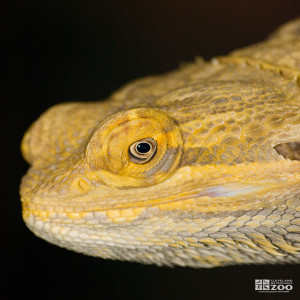Inland Bearded Dragon
[Pogona vitticeps]

: Inland (Central) Bearded Dragons have an adult head and body length of 16 to 24 inches and a tail length up to 13 inches. The body can be gray, brown, rufous or yellow, and can exhibit rhomboidal markings. A pattern of ocelli (eye-like spots) is present on the pale gray belly. There are large, long, pointed scales on the throat and sides of the head. They have the ability to change color. There is a row of spines along each side of the body. These run down to the forelegs and continue as a broad band down to beneath the shoulders. The head is as wide as it is long. There are 8 species of bearded dragons.
Location: Animals Formerly at Zoo
Share:
Range
Inland bearded dragons can be found in the eastern half of South Australia and the southeast part of Northern Territories.
Habitat
Inland bearded dragons inhabit tropical wooded steppes, dry forest and agricultural areas.
Conservation Status
Least ConcernPrimary Threats
Human Wildlife Conflict- Pet TradeGestation
Incubation: 68 to 96 days
